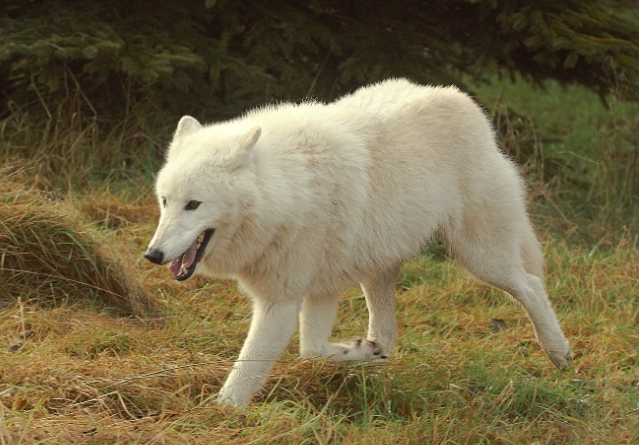(单词翻译:单击)
听力文本
But wherever grass eaters travel, predators lie in wait.
但是无论草食性动物走到哪里,都有捕食者等待着他们。
Here they are, Arctic wolves.
就是他们,北极狼。
They must seize their chance while the caribou pass through their territory.
他们必须要在驯鹿经过领地时把握住机会。
The wolf runs at the herd, trying to flush out the weak or the slow.
北极狼跑向鹿群,试图冲散群体中的弱者。
A calf is separated.
一只幼鹿走散了。
At full tilt, 40 miles an hour, the wolf is just faster.
狼全力以赴捕猎的时速将近60公里,只比小鹿快一点点。
But the calf has stamina.
但是幼鹿的耐力更好。
Only a few weeks old, and this calf's will to survive is remarkable.
虽然只有几周大,这只幼鹿的求生欲望让人叹为观止。

And it needs to be, for these young caribou have now started a journey that will last a lifetime.
而且必须如此,这些幼鹿开始了一场终其一生的旅程。
Forever chasing the seasonal growth of the grass on which they depend.
永远追寻着他们所需要的季节性生长的青草。
Like all grassland creatures, they are at the mercy of these unpredictable but ultimately bountiful lands.
和其他草原生物一样,他们依赖着这变化莫测而又极其慷慨的大草原。
Grass can survive some of the harshest conditions on earth, flood, fire and frost, and still flourish.
青草可以在地球上最为极端的环境下生长,经受洪水、火灾和冰霜的考验仍然生机盎然。
So it is that grasslands provide a stage for the greatest gatherings of wildlife on planet earth.
所以草原为地球上最壮观的野生动物群提供了舞台。
视频及简介
草原覆盖了所有土地的四分之一,支持着野生动物的大量聚集,但为了在这里生存,动物必须忍受地球上最恶劣的季节性变化。从亚洲怪异的西贡羚羊,到巴西的巨型食肉动物,草原动物已经以不同寻常的方式适应了这些极端。在被洪水淹没的奥卡万戈,狮子在史诗般的战斗中,在大草原上捕食一头令人生畏的水牛,捕食者利用大象来帮助捕捉昆虫,在寒冷的北部苔原上,驯鹿开始在饥饿的北极狼的阴影下进行大迁徙。


